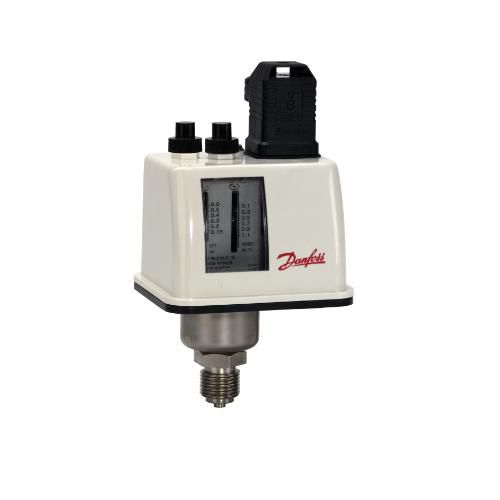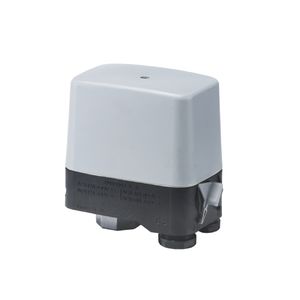
- Detection - Measurement
- Flow, Pressure and Level Measurements
- Bellows pressure switch
- Danfoss Industrial Automation
Bellows pressure switch BCP seriesdifferentialSPDTthreaded


Add to favorites
Compare this product
Characteristics
- Technology
- bellows
- Pressure type
- differential
- Contact type
- SPDT
- Mounting
- threaded
- Fluid
- for water, for air, for steam
- Material
- stainless steel
- Protection level
- SIL 2, IP65
- Other characteristics
- stainless steel, increased safety, IP65
- Pressure range
Min.: 0 bar
(0 psi)Max.: 40 bar
(580.15 psi)- Switching power: current
1 A, 6 A
- Burst pressure
Min.: 0 bar
(0 psi)Max.: 17.6 bar
(255.27 psi)- Process temperature
Min.: -20 °C
(-4 °F)Max.: 70 °C
(158 °F)
Description
The BCP type is a series of dedicated pressure switches for safety and pressure monitoring of steam and hot water boilers.
The BCP incorporates a single-pole changeover microswitch where the contact position depends on the pressure in the connection port and the range set value.
For installations, in which operation is particularly critical for safety reason, the use of fail-safe control is recommended.
Features -
Available as high and low pressure limiters as well as pressure controllers
Wide pressure range: from low pressure BCP1 with narrow differential to high pressure BCP7
The fail-safe dual bellows enable prématuré cut-out when fault occurs
DIN plug mounted on the top of control for easy electrical wiring
Single-pole changeover switch (SPDT), switch + alarm
Direct mounting on pressure connection or wall mounting by means of a bracket
Versions with automatic and manual resets available
Screw adjustments made on top of housing
Manual reset for pressure limiters possible only by means of tools
Safety Integrity Level: SIL 2 according to IEC 61508:2010
Catalogs
No catalogs are available for this product.
See all of Danfoss Industrial Automation‘s catalogsRelated Searches
- Pressure transmitter
- Analog pressure transmitter
- Pressure switch
- Membrane pressure transmitter
- Relative pressure transmitter
- Stainless steel pressure transmitter
- Waterproof pressure transmitter
- Mechanical pressure switch
- Waterproof pressure switch
- Absolute pressure transmitter
- Threaded pressure transmitter
- Diaphragm pressure switch
- Sensitive element pressure transmitter
- Process pressure transmitter
- Compact pressure transmitter
- IP65 pressure transmitter
- Adjustable pressure switch
- IP67 pressure transmitter
- Piezoresistive pressure transmitter
- Flow switch
*Prices are pre-tax. They exclude delivery charges and customs duties and do not include additional charges for installation or activation options. Prices are indicative only and may vary by country, with changes to the cost of raw materials and exchange rates.















